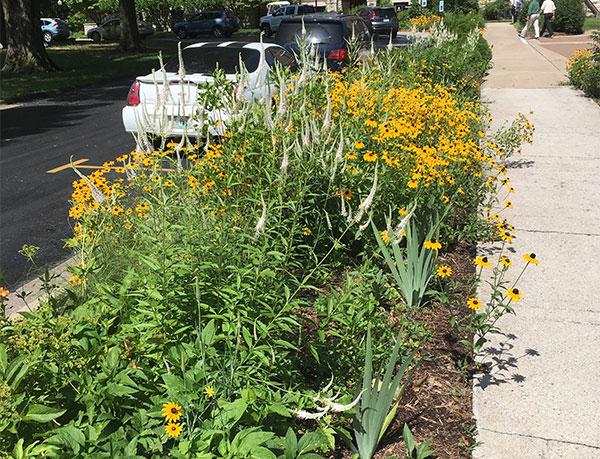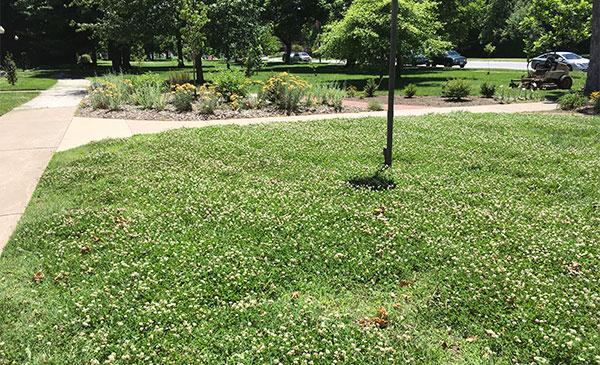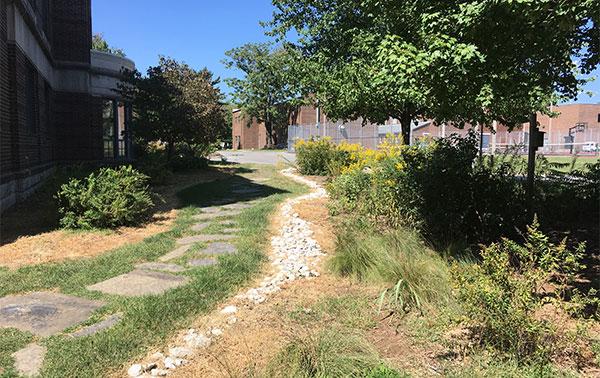Moving Beyond Sustainability
Sustainability as relates to the landscape is difficult to define. I mostly know what it is, but at the same time I'm not really sure. The word itself seems to ask, "Can my landscape sustain itself?". However, if sustaining is the question, then any landscape that can be perpetuated for whatever reason, and consuming whatever resources required, is necessarily sustainable.
Sustainability also seems to have an ecological component of harmony with the environment. This attribute seems very wise to me as nature everywhere continues to diminish in the face of development. No one can say all perpetual landscapes that are ecological harmonious are sustainable. I suggest sustainability is too vague a context, being fraught with widely held misconceptions that prevent its adoption as the best way to define, design, and manage our landscapes.
Don't Worry What We Call It
A landscape must support the organization in which it resides. If the landscape helps support the strategic imperatives of the organization, and stays within devoted resources, it will be sustainable. But again we are in a predicament. I suggest a landscape must do more than just support its parent entity. Landscapes can, and should, provide the widest reach of benefits possible. This maximizing of benefit does not readily conjure up a single moniker to name it. It is more a paradigm than a designation.

If a bed is functional AND sustainable, can't we just appreciate it?
I have found for a segment of the landscape users here at Drury University, sustainability is reflective of the direction they want to head in. However, I have also found that calling my landscape sustainable is a phrase that elicits a negative framework in some other people's minds. Both of these groups want the most from the landscape. What I name it is not as important as what function the landscape provides.
Function Is Paramount
I once asked someone from the Natural Resources Conservation Service the following question: What landscape can I cultivate that grows in optimal harmony with what my native ecosystem will support? The answer was a Tallgrass Prairie (pre-development Springfield, MO was savannah comprised of Missouri native trees, shrubs, grass and forbs). This answer intrigued me. I loved the thought of a beautifully diverse yet simple landscape requiring very little intervention or resources. There was only one small problem. The park I worked in at the time was a destination for families looking for recreation, and a major spot for civic functions. None of these occurrences could take place in a tallgrass prairie. What is obvious to all Grounds Managers is that the landscape has to function in a way that supports the organization and its mission. If the landscape is not functional, it cannot be sustainable.
Function Is Not Singular
If someone were to attempt to describe a functional landscape, what words would they use? Here at Drury University there are five main functions that we insist the landscape fulfill: academically supportive, aesthetically acceptable, environmentally compatible, financially feasible, and supportive of DU outreach. By uniting these goals in the landscape we achieve sustainability. To the extent each of these goals is accomplished is the extent to which our landscaping is successful.

We left this clover in a high visibility area just to feed bees. Function is not singular (aesthetic).
The sustainability of the landscape is compromised when any of these goals are not fairly considered during implementation or ongoing operations. I suggest that just like any natural ecosystem (woodland, wetland, college campus, etc.) a landscape becomes more stable as diversity increases. As diversity decreases (monoculture) the landscape becomes unstable (unsustainable) and necessitates inordinate resource consumption to be maintained.
Note: In some instances, monoculture is appropriate. Sports turf, crop production, etc. are acceptable instances of monoculture, but even here proper culture strives for as much diversity as acceptable (seed blends, crop rotation, cultivars, etc.). We also strive to manage these systems in as "green" a manner as possible. We must think of diversity in terms of function, not only in biologic terms.
Reconciling Sustainability and Function
Now we get to the crux of the issue. Sustainability is not always functional. I cannot put a tallgrass prairie at my admissions building. On the other hand, functional is not always sustainable. Traditional landscapes will require organizations to invest scarce resources that are more pressing elsewhere. This is where the penultimate characteristic of sustainability comes into play: balance.
By maintaining equilibrium between the aspirations of function in our landscape, we create stability. One characteristic enhances, or offsets, another. Where appropriate, native plants decrease resource consumption, which enhances financial feasibility. Aesthetically pleasing traditional landscape, where appropriate, supports the marketing potential (outreach). Just as in a natural system, a landscape becomes unstable when we focus too greatly on one facet (function) of that landscape.
Genius Loci
Genius loci is a Roman philosophy that has to do with the spirit of a place. Landscape architecture utilizes this thought to suggest that the landscape must reflect the context (spirit) of where it resides. We interpret context several ways; the environmental context of an area is bedrock, climate, and life forms of the place. Context is also established in the community that inhabits the place. Also the organization, the finances, etc. Context is created by function, and vice versa. Omitting or short-changing any attributes (context/function) makes it unsustainable. The truly sustainable landscape is one that pays equivalent homage to all the functions required of it.

Sustainable landscapes must blend as many functions as possible. This bed fits the spirit/function of the area it is in.



0 Comments
Recommended Comments
There are no comments to display.